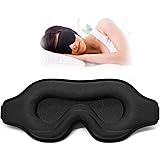Approximately 80% of adults experience lower back pain at some point. This pervasive issue often disrupts daily life. It significantly impacts sleep quality. Finding effective solutions is paramount. The video above demonstrates a straightforward yet powerful technique. It involves strategically placing a pillow. This simple adjustment addresses common sleep posture flaws. Understanding the biomechanics behind this hack reveals its efficacy. It offers more than just temporary relief.
Understanding Lumbar Lordosis and Back Sleeping
Sleeping on your back often creates a gap. This space exists between your lumbar spine and the mattress. This gap signifies an exaggerated lumbar lordosis. The natural inward curve of your lower back increases. Gravity pulls your pelvis down. Your lumbar vertebrae extend unnaturally. This position can strain spinal ligaments. It also compresses intervertebral discs. Imagine hours in this suboptimal alignment. Chronic lower back pain often results from such stressors. This sustained hyperextension contributes to muscle tension. Specifically, erector spinae muscles become overactive.
The issue stems from pelvic anterior tilt. This tilt amplifies the lumbar arch. It often occurs as hip flexors shorten. These muscles pull the pelvis forward. Your spine compensates for this imbalance. This creates the ‘hole’ mentioned in the video. This ‘hole’ allows a book to pass underneath. It indicates a lack of proper support. Correcting this position is crucial. It minimizes the load on your posterior chain structures.
The Biomechanics of Knee Elevation for Spinal Health
Placing a pillow beneath your knees is a game-changer. This simple action subtly alters pelvic mechanics. It induces a slight posterior pelvic tilt. This reduces the exaggerated lumbar lordosis. The lower back flattens gently. The spine assumes a more neutral alignment. This neutral position is key. It alleviates pressure on spinal nerves. It also promotes disc decompression. Think of it as releasing a stretched spring. The tension diminishes instantly.
This elevation also helps relax hip flexors. These muscles attach to the lumbar spine. Tight hip flexors exacerbate lower back discomfort. Relaxing them reduces their pull. This further supports a neutral spinal posture. Muscle spindles detect reduced tension. They signal muscles to relax. This fosters a state of restful recovery. Spinal stability improves dramatically. Vertebral bodies find their optimal spacing. This seemingly minor tweak offers significant ergonomic benefits.
Optimizing Pillow Placement for Lumbar Support
The type of pillow matters for this technique. Choose a pillow with adequate loft. It should comfortably fill the space behind your knees. Avoid overly firm or too soft options. A medium-firm pillow often works best. It provides sustained elevation without discomfort. Your knees should be slightly bent. The pillow should extend from mid-thigh to just above the calf. This ensures even weight distribution. It prevents any localized pressure points.
Experiment with pillow thickness for optimal comfort. Different body types require varied support. A taller individual might need a thicker pillow. A smaller person may prefer a flatter one. The goal is to eliminate that lumbar arch. Your lower back should feel gently supported. It should make contact with the mattress. This ensures consistent spinal alignment. This subtle change dramatically enhances sleep quality.
Beyond the Knees: Comprehensive Sleep Ergonomics
While knee elevation is powerful, other factors contribute. Mattress firmness plays a critical role. A mattress too soft allows excessive sinking. This can exacerbate lumbar lordosis. An overly firm mattress lacks contouring. It fails to support natural spinal curves. A medium-firm mattress is generally ideal. It offers both support and pressure relief. It cradles your body without creating new pressure points. Consider a hybrid mattress for versatility.
Your head pillow also influences alignment. Ensure it supports your cervical spine. It should maintain a neutral neck position. Avoid pillows that lift your head too high. This creates forward head posture. It can cascade into lower back issues. The entire spine works as a unit. Imagine a complex pulley system. Tension in one area affects others. Optimal sleep posture is holistic. It involves all spinal segments working in harmony.
Integrating Core Stability for Lasting Relief
Addressing sleep posture is one component. Strengthening your core musculature is another. A strong core supports the lumbar spine. It helps maintain neutral posture throughout the day. This translates into better sleep alignment. Exercises like planks and bird-dog are beneficial. They engage deep abdominal and back muscles. These muscles stabilize the pelvis and spine. Consult a physical therapist for tailored exercises.
Daily postural awareness is equally vital. Pay attention to how you sit and stand. Avoid prolonged sitting with poor posture. Take frequent breaks to stretch and move. This prevents muscle imbalances from forming. Proper body mechanics become habitual. This reduces the chronic stress on your lower back. The pillow hack is a nocturnal aid. It complements an active, posture-conscious lifestyle. This integrated approach offers the most enduring relief from lower back pain.








